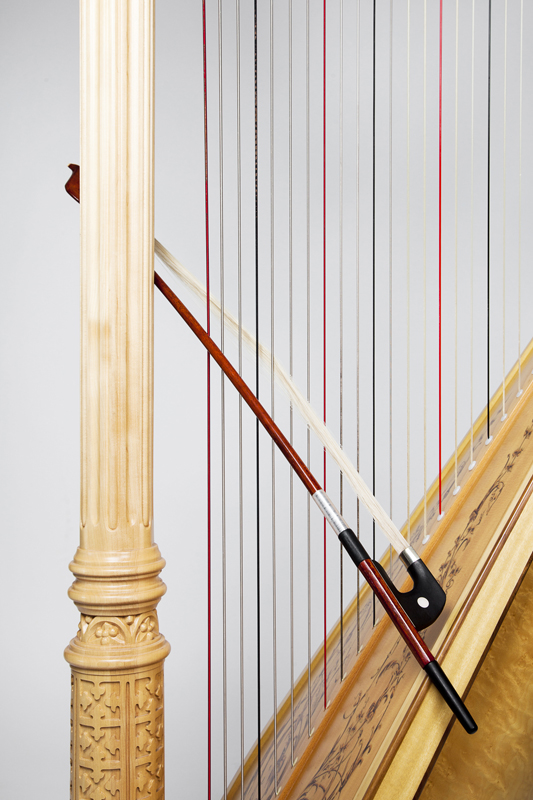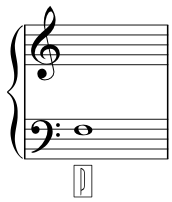Bow
Violin or other string instrument bows can be used on the harp. This playing technique was mentioned as early as 1811 by Comtess de Genlis in her book Nouvelle méthode pour apprendre a jouer de la harpe.[Genlis1811]
Production
The bow is inserted horizontally between two strings with the bow hairs facing one of the two strings. The bow is then drawn over that string to make it sound. If the bow is thick, it may be necessary to push the string that is not supposed to be played out of the way. It may also be better to hold the bow at a slight angle to the string to keep the stick of the bow from touching the other string.
Violin bows are normally appropriate in size. However, it may be more comfortable to use a smaller bow for the higher register, such as a half- or quarter-sized violin bow, for example. Cello bows also work well, especially on the lower strings, and a double-bass bow is very good for the lowest string.
It is also possible to unscrew the frog of the bow and fix it in the strings so that the harpist can grab it and pull during the composition.

Bow fixed in strings.
Sound
The sound of bowed harp strings is similar to the sound of a viola da gamba or a cello.
Notation
A bow symbol is added above or below the notes.

Bow symbol.
Range
Additional remarks
It takes time to move the bow into the playing position. Therefore adequate time should be given between two bowed notes. Although only one hand is needed to play with the bow, both hands are normally needed to place it on the string (in order to guide the bow into place, push away other strings, and so on).